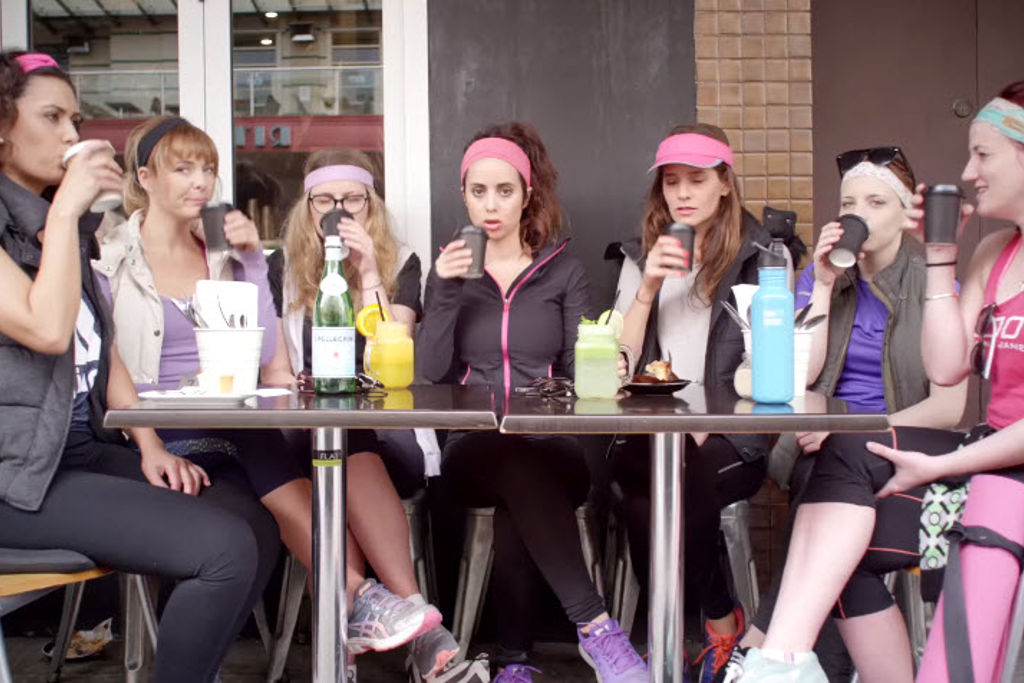This Infuriating Profile On “The New, Fit Face Of Kings Cross” Is Proof That Sydney Is Fucked
The future of Sydney is here, and for anyone who isn't privileged, powerful and glamorous it is cold and hard and mean.

From police horses in pubs, to $400 fines for riding on the footpath to disgusting old houses with actual mouldy dead bodies in them that sell for $1.1 million at auction, Sydney is already streets ahead in 2016’s Shittest City in Australia award. The lockouts have torched the inner city’s once-vibrant nightlife, Westconnex is going to turn some of the city’s most liveable suburbs into one giant spaghetti junction, and the state government’s made it even easier for little old ladies to gamble away their retirement savings by approving Barangaroo, James Packer’s latest giant, dick-shaped monument to himself.
Now comes the latest chapter in Sydney’s exciting transition from ‘grown-up city’ to ‘gated enclave where the wealthy play polo riding on poor people instead of horses’. Earlier today the Sydney Morning Herald‘s life and style section published an in-depth profile on the changing face of Kings Cross, an inner-city suburb historically notorious for its wild nightlife, shady characters and neon (and beer, and vomit)-soaked excess.
Thanks to an 80 percent drop in late-night foot traffic driven by the lockouts, though, the nightclubs and strip joints that once made up the Cross’s heart are going the way of the dinosaurs. (The Herald, it should be noted, was one of the biggest pushers for the introduction of lockout laws back in 2014, and has continued to talk them up even as businesses and venues across the lockout zone go under.)
But as the Herald kindly informs us, the Bada Bing-sized hole in the Cross’s soul is already being filled — and what’s filling it is a pretty good indicator of where Sydney as a city is going.

Spoiler alert: this.
–
Put Out Your Activewear: The Death Of The Cross
“Once called the ‘suburb for junkies’, the Cross is going on a detox,” the Herald declares. “Where there was once a Korean nightclub, there is now a gym. Downstairs, where the New Hampshire Hotel once hosted ultimate grunge band, Nirvana, a yoga studio has just opened. A gym now resides where iconic club Hugos once was, while cult functional fitness chain F45 has opened up across the road next to World Bar.”
So that’s good, then. Gyms. The future of Sydney is gyms. In ten years, everything will be a gym. The Harbour Bridge will be a gym. The Domain will be a gym. Alan Jones will be a gym. Who needs a nightspot where one of history’s great bands might play a cheeky gig on a Saturday night when you can go do synchronised arm exercises with office managers while a would-be army instructor screams at you over a Pitbull EDM remix?
According to local gym co-owner Veronica Wallington, who’s quoted extensively throughout the article, this bright new dawn for Kings Cross has been a long time coming, and is just doing wonders for the area’s character.
“You [used to] get someone wander in off their head. We’ve only had to call the police once,” Wallington says. “Now we keep the gym open all the time.
“This area is known for its problems and issues — from mental health to drugs and alcohol and the mental health issues that stem from that — it’s crazy to now think that we’re helping to lead the way in a 180-degree turnabout,” the article says, inexplicably skimming over the finer points of how Kings Cross’s homeless and addicted benefit from a new 24-hour gym.
Wallington, who’s got a yoga studio and wholefoods cafe in the works, also waxes lyrical on the healthy-living lifestyle so popular in Sydney’s well-heeled eastern suburbs; one that seems antithetical to both the Cross’s historic vibe and the concept of fun, in general.
“There’s an uprising in these health-conscious businesses generally. It’s part of a generational change. Young people are not as interested in just going and getting smashed on the weekend,” Wallington says. “We hold a meditation party every third Friday of each month. That’s how this generation parties — they want to get up in the morning and feel good.”
To be fair, there is some statistical evidence to back that sentiment up; daily drinking among 18-to-39-year olds has fallen sharply since 2004, while under-18s are binge drinking at half the rate they were in 2002. But if the future of young people having a good time in Sydney is rocking up to morning meditation parties in their activewear, there is a strong legal case for a United Nations resolution pledging to nuke this benighted city from orbit.

Yes. God, yes.
–
Sydney’s Sickness: Our War On The Poor
But it’s when the article reflects on the changing nature of the Cross, and the city that surrounds it, that things get really interesting.
“The businesses are closing down — the clubs and the bars — and I think that’s heavily due to the lockout laws but at the same time the societal shift or cultural shift, it’s there — it has been in Bondi — and is transferring further and further into the city,” Wallington says. “I don’t want to be biased and say I’m for the lock-out laws when it has helped close down businesses, but at the same time if it has helped accelerate this push for a healthier, wellbeing and cultural change, then I can only see it as a good thing. It was a change that was coming and it’s just been accelerated by it.”
And it’s that mindset that the new Sydney so perfectly embodies. Celebrating the decimation of industries and livelihoods you don’t like because they were loud or ugly or dirty is so quintessentially Sydney, we could put it on our numberplates. So is the faux-moral, quasi-spiritual elevation of hyper-monetised activewear lifestyles that require the right postcode and a trust fund to imagine, let alone maintain. “Cultural change”, in this instance, is a euphemism for making all those nasty poor people quietly go away. Where they go and what happens to them doesn’t particularly matter, so long as they’re not here.
The future of Sydney has arrived, and for anyone who isn’t privileged, powerful and glamorous it is cold and hard and mean. It’s public toilets and sitting areas being redesigned to drive away homeless people. It’s a nine-dollar cold-pressed detox juice, delivered to you on a bike by someone paid below minimum wage on a sham work contract. It’s old-age pensioners being driven out of their public housing so their inner-city homes can be sold at $6 million a pop. It’s a Premier who guts funding for domestic violence support services while racking up a $600-a-day social media budget.
This isn’t some misplaced armchair nostalgia for the old, ‘gritty’ Sydney that whitewashes the violence and dysfunction Kings Cross was once synonymous with. But a suburb that “improves” by pricing out its former residents doesn’t solve anything — it just shifts poverty somewhere less visible and uncomfortable for the wealthy newcomers. The Kings Cross heroin injecting room did an astounding job at ridding the streets of used needles and dead bodies while treating addicts with dignity and respect, instead of the mixture of pity, indifference and fear this new mindset reeks of. It didn’t move vulnerable people on, to go off and die somewhere else.
There’s plenty wrong with Sydney. Not being able to buy a bottle of wine after 10pm or having to run a gauntlet of sniffer dogs every time you go to a music festival is frustrating, unfair and embarrassing. But the ongoing war on this city’s invisible people — anyone too poor, too black, too old, too political — in the name of the glistening, soulless vision championed by our political and economic leaders is our greatest failure.
Sydney, I love you, but God you’re bringing me down.